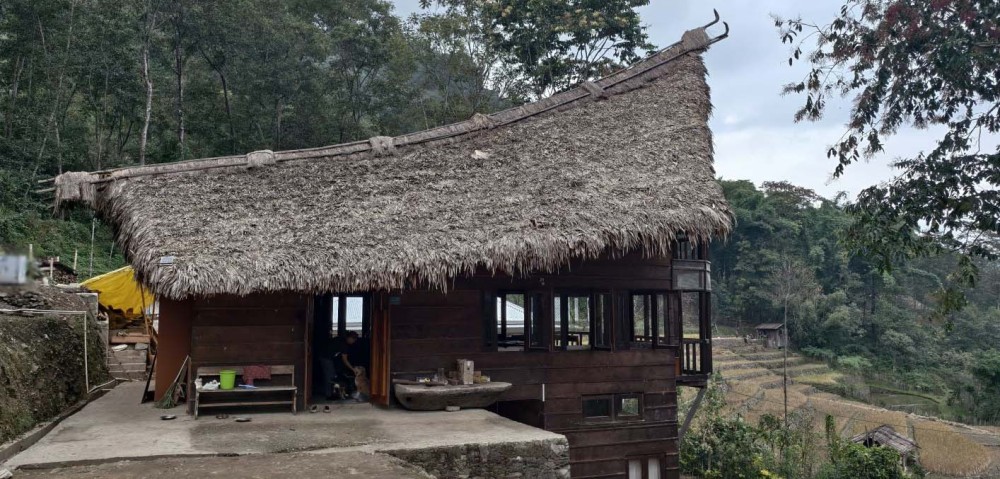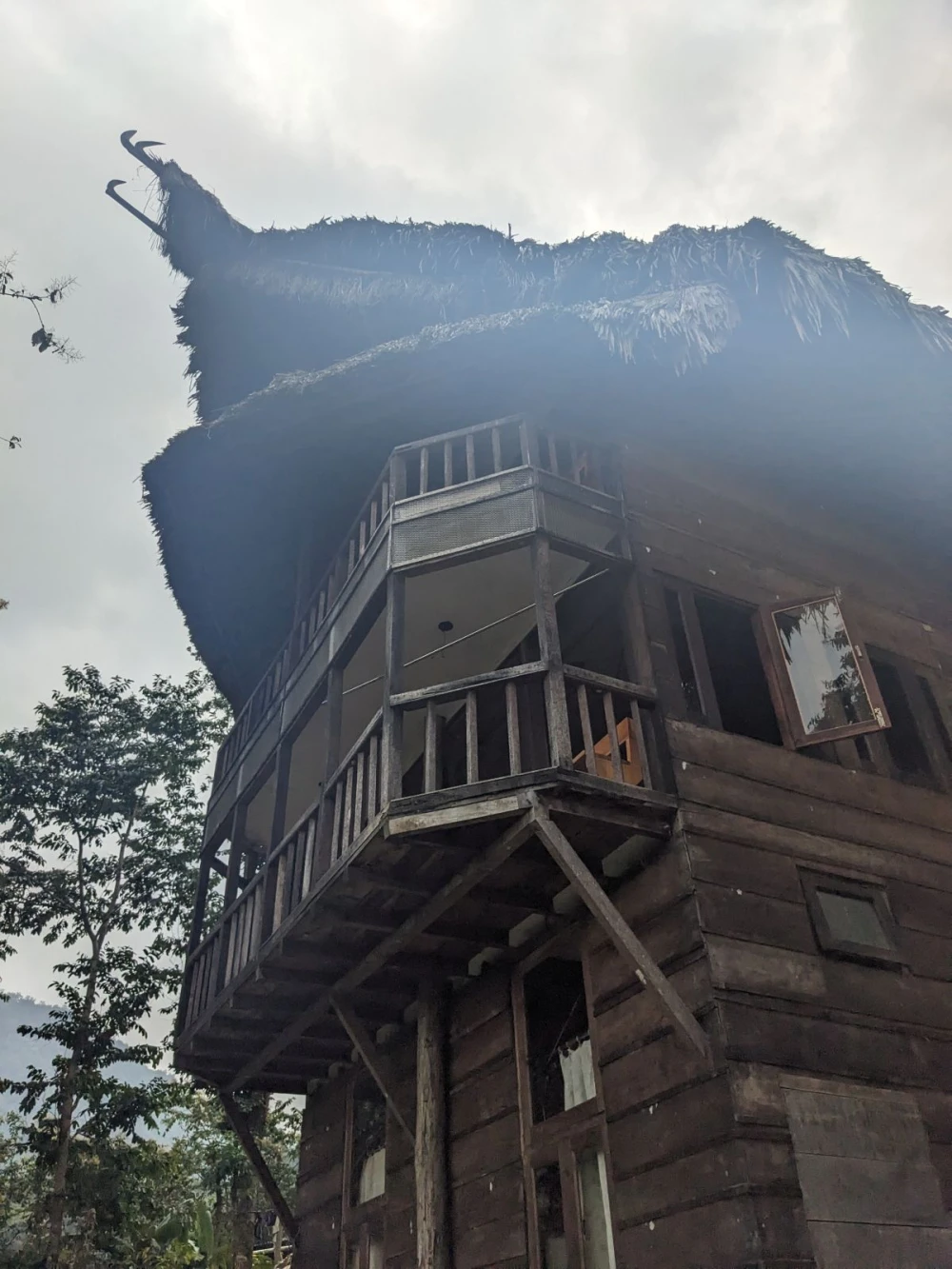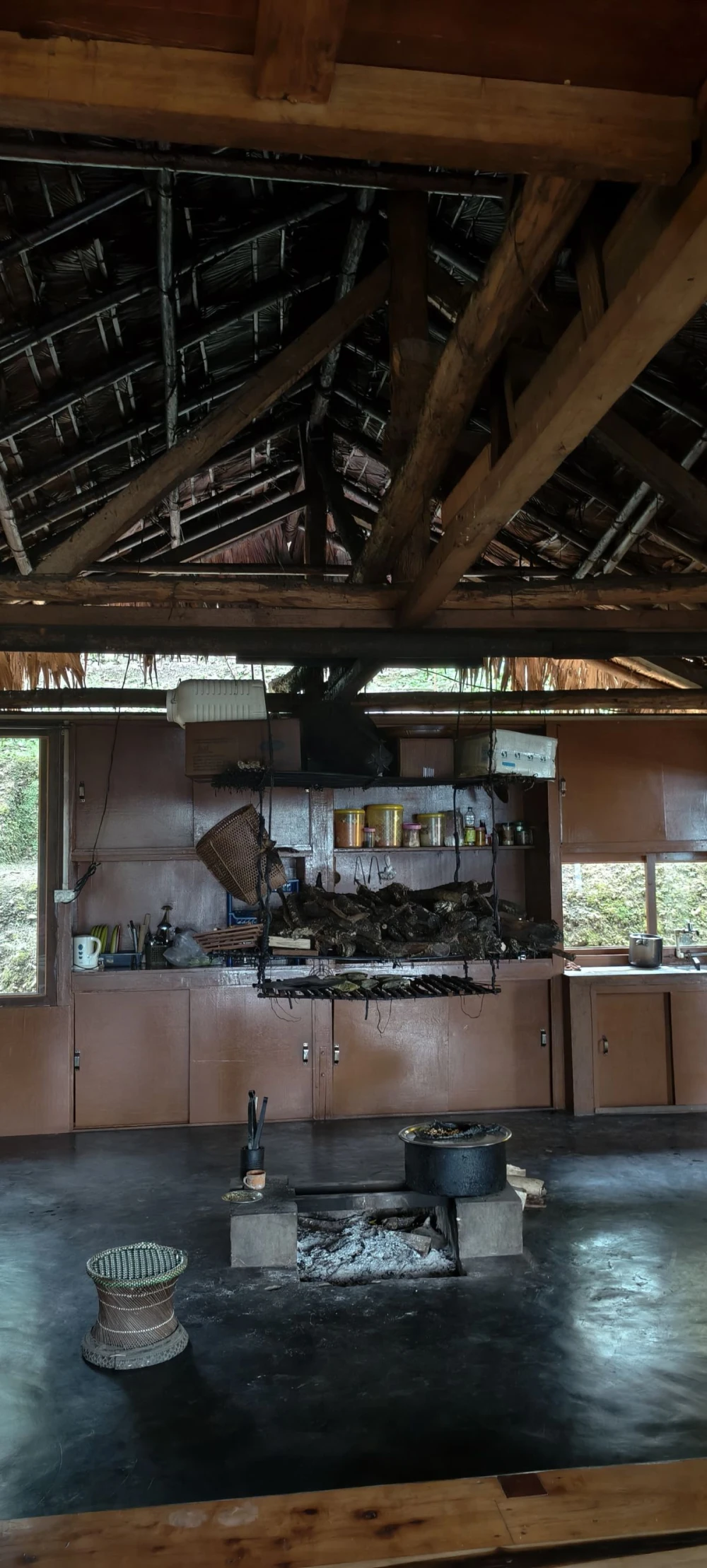
Yarden Jamir
Tuensang | November 5
A wooden house perched on a Tuensang hill catches the late afternoon light, its thatched roof faded to the colour of dry hay. Smoke curls from the hearth. The time-darkened walls hold a deep stillness, the kind that slows the body and softens the voice.
Houses like this are rarely built now. Concrete has reshaped Nagaland’s skylines, supplanting timber with cement and thatch with metal sheets. But a few families still choose wood, driven by preference, philosophy, instinct or longing. This choice begs a simple question: what is a wooden house worth beyond its walls?
For many, the answer is not nostalgia alone. Rev Dr Chingmak Chang, who spends weekends in a modest wooden home in Tuensang, describes the feeling not as comfort, but nourishment. “We feed the body with food, we feed the spirit in church. But our emotional part, we rarely feed,” he says. “Nature feeds something in us that we can’t explain.”
“Wooden houses connect the soul and body to nature,” he says. To him, wood carries a natural stillness into a home, a grounding presence concrete rarely offers. While many label this sentiment as childhood memory, of sleeping on wooden floors or listening to rain on thatch, Chingmak believes it runs deeper: it comes from being held by natural materials rather than surrounded by concrete.

A disappearing craft
In Tuensang town, a daily-wage builder, Binyan Chang is fitting beams together with practiced familiarity. He has been building houses for about 20 years, both concrete and wooden, without formal training. “I just do it,” he shrugs, brushing sawdust off his hands.
The house he is working on uses a mix of seasoned and freshly sourced wood. “Anegre is the best wood here,” he says. “Teak also, and one red wood, we call them lal kuri.” For interiors, he often uses plywood to manage costs. However, the common belief that wooden houses are cheaper is not always true. “Some wooden houses cost more than concrete ones,” he says. “It depends on the owner’s taste. If they want rough finishing, we do it fast. If they want it fine, it takes time.”
Finishing, he explains, is where labour multiplies, refining corners, smoothing surfaces, perfecting joints. “The rough structure is quick. To make it beautiful takes time.”
Wood prices have risen, timber is harder to source, termites vary by area, and fewer young workers are interested in learning the craft. “Now workers are divided,” he notes. “Those who choose wood stick to wood. Those who choose concrete stay in concrete.” The older generation of builders skilled in both is slowly disappearing.

Saving a Naga craft
While Binyan works with his hands, an architect is thinking about wooden houses through design, culture, and the future. Nayungkhumla Chang, founder of Atelier Morung, moving between Los Angeles and Tuensang is like “time travel.” She bridges these two worlds, one fast and systemized, the other slow and intuitive, rooted in land and material.
Her pull towards wooden homes began as a longing for the sensibility of her childhood. “Because of where I grew up, the memories of those houses are part of me,” she says. “Life moved so fast later. Wooden homes hold something that helps me hold on.”
She sees wooden homes as vernacular wisdom, architecture shaped by climate, land, and lived experience. “Every site is different. You cannot apply the same design everywhere. In Dimapur, a wooden house holds heat and becomes uncomfortable. There, mud houses work better. But in the hills, wood is light, stable, and warmer.”
When Nayung designs, she begins with sun and wind, not walls. Morning light should reach the bedroom so the body wakes naturally. The kitchen must align with wind so smoke circulates and preserves the thatch. The hearth, chulha, remains the centre because it gathers warmth and conversation.
Yet building with wood today presents a conflict. Modern living demands plumbing, electricity, storage, and waste outlets. In one project, she redesigned a layout to conceal pipes without compromising the wood aesthetic. “Wood is sacred. Traditionally, our people honoured the forest when we cut trees. We are losing that sense of responsibility.” She hesitates to use too much timber, aware that demand accelerates logging. “I love wood, but I also think about the damage we cause.”
Families once built with wood, thatch, and mud, whatever the land provided. But concrete became aspirational, and in towns like Kohima and Dimapur, the first concrete houses belonged to the elite. It quickly became a marker of progress, while wood was labeled old-fashioned. Nayung sees this class shift clearly. “It is status,” she says. “The first person to build a concrete house in a village was usually the richer one. Naturally, others wanted that. Slowly, we believed wooden houses were for the poor, concrete for the successful.”
This shift was no accident. Government schemes that subsidised tin sheets over slate roofs changed the material culture. “They encouraged people to replace slate with tin, promising money in return. That changed everything,” she says. Middlemen profited, but cultural loss was never counted.

‘Village wisdom’
Rev Chingmak sees a deeper effect, an internalised distancing from one’s own traditions. “They called our traditions ‘backward’ and we internalised it,” he says. “We started running away from what was ours.”
To him, choosing wooden homes today is not a sentimental return, but a restoration of balance, material, cultural, emotional.
Yet the path back is not simple. Timber is more expensive, forests are thinner, and thatch is rarely harvested. On the road from Tuensang, Rev Chingmak points to slopes where families once maintained thatch fields for roofing. Whole hills, golden with tall grass, sway in the wind. “Traditionally, every family had a patch of thatch to build their house,” he says. “It was passed down through generations.”
Few harvest them now because few build with thatch. But the method still works, cool, breathable, sustainable, with one condition: it must be smoked. Villagers know a particular leaf that, when burnt with the thatch, keeps insects away. “Village wisdom,” he smiles.
For him, wooden homes represent more than architecture; they reflect a way of thinking rooted in nature, resourcefulness, and restraint. What he values most is the space for improvisation. Walls can shift. Attics can become reading rooms. Storage grows into the rafters. “In a wooden house, you can keep re-imagining,” he says. “It lets you evolve with it.”
Perhaps that adaptability is what might carry wooden homes into the future, not as relics, but as modern, sustainable hybrids.
In small villages, a quiet revolution is brewing. In Longpang, the Chang family homes designed by Nayung have become blueprints for the future, drawing visitors to see a new possibility of how tradition and modern design can coexist.
These are not museums of tradition, but homes animated by life, repaired, smoked in, and argued over. However, the ultimate threat to them is not the elements, but a faded imagination that can no longer picture a wooden house as a “real house.” Nayung hopes that seeing contemporary examples, homes that are beautiful, functional, and rooted, might shift that mindset. “I want people to see that wood is not inferior,” she says. “It can be modern, refined, warm, and ours.”
This mindset is spreading. She mentions a growing interest among recent graduates in vernacular design, sustainability, bamboo, and local materials, signaling a slow but steady shift.
As scarcity grows and awareness returns, wood, may become a prized material again. “The tables will turn,” Nayung says with quiet certainty. It depends on whether the next generation sees cultural, emotional, ecological, and spiritual value in them.
Rev Chingmak believes the return will be driven by the human soul’s exhaustion from speed and artificiality. “People will yearn for spaces that restore them,” he says. “Wooden houses feed you in a way modern houses don’t.”
Today, wooden houses still stand across Nagaland, some new, many old and leaning, their bones steeped in smoke. All share a warmth that concrete lacks. They endure unnoticed. For wooden houses do more than shelter a family. They keep a culture warm.
This is the second report of the four-part series highlighting the experiences and challenges faced by the construction industry in Nagaland as part of the KPC-NBOCWWB Media Fellowship 2025


 - Copy.jpg)



